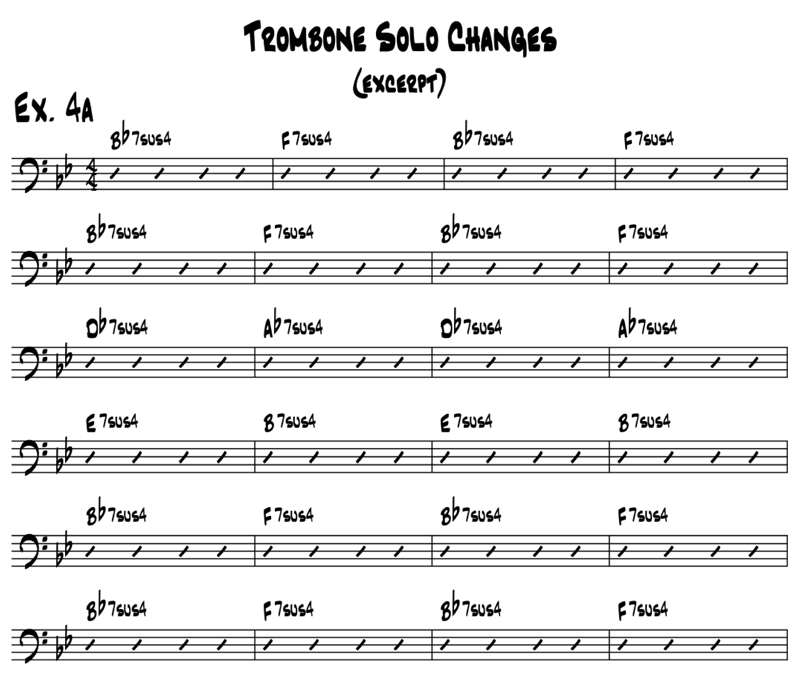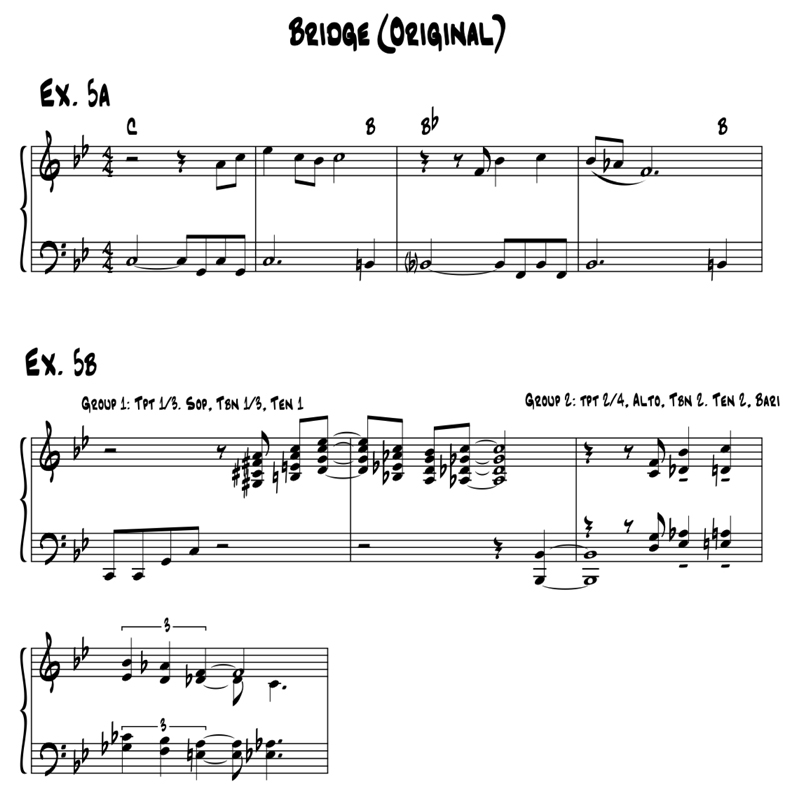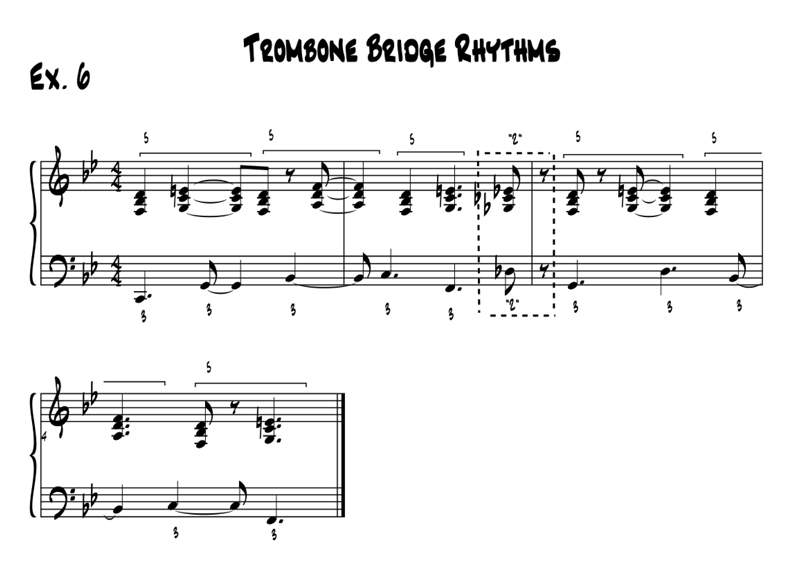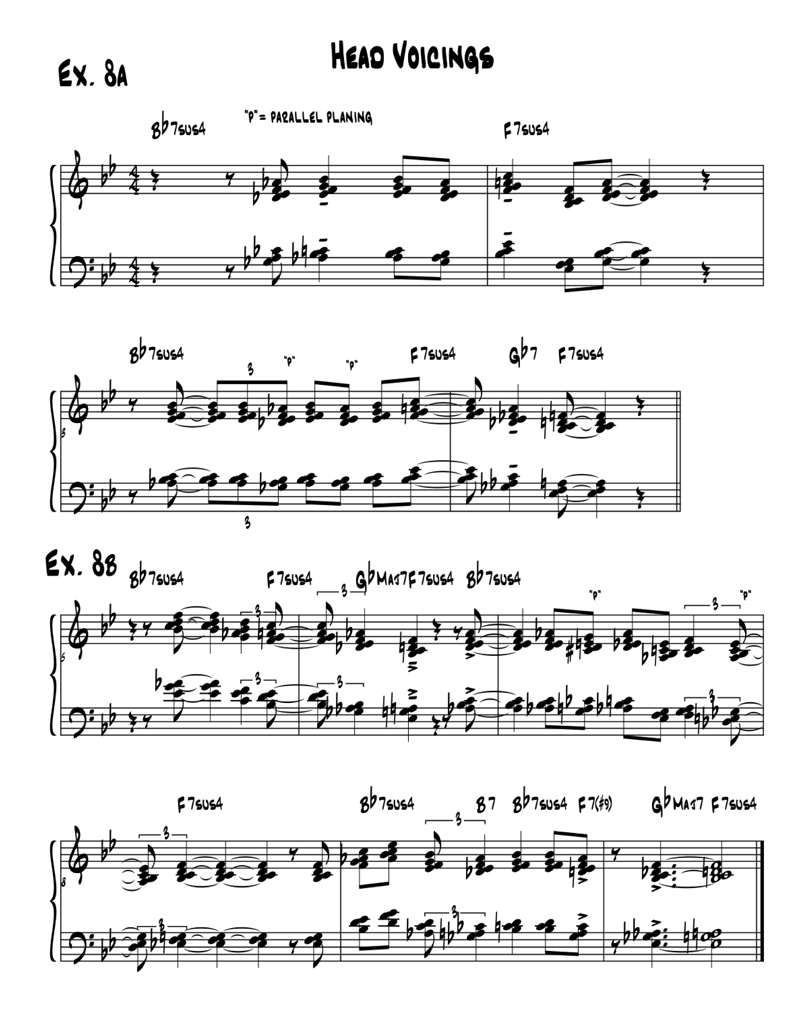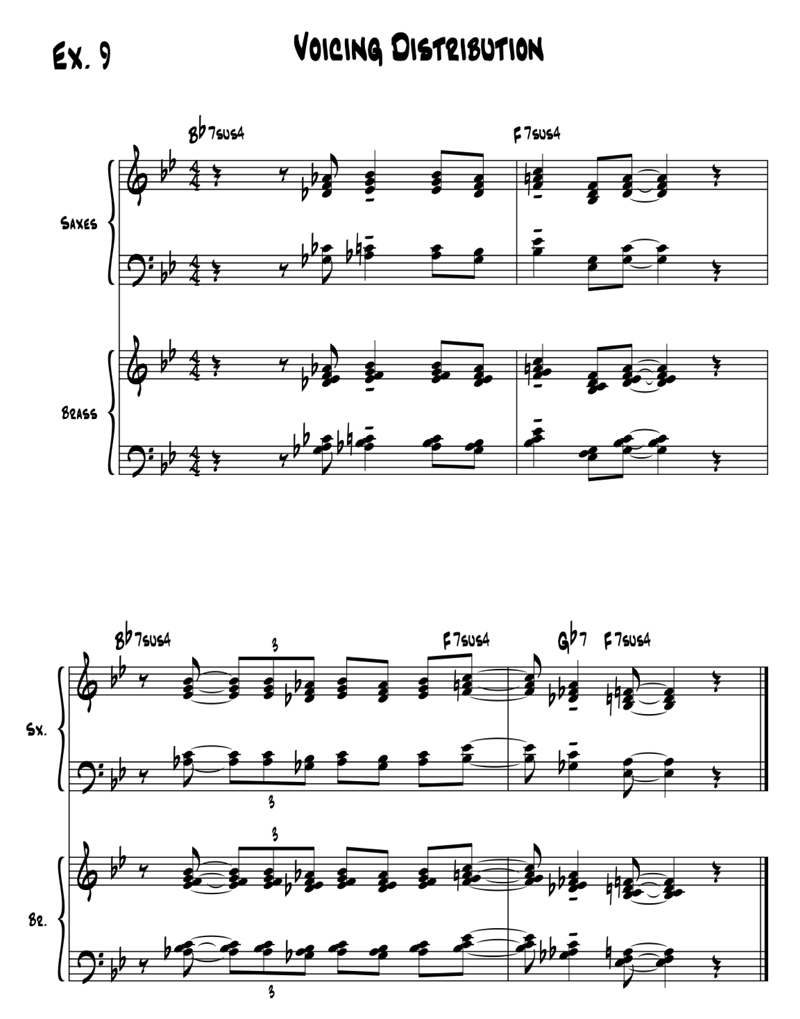Arranging “Up from the Skies” for the Vanguard Jazz Orchestra
By Jim McNeely
In planning the music for the Vanguard Jazz Orchestra’s new CD on the Planet Arts label (100454), I knew that most of the compositions would be my own. But I also wanted to include an arrangement of someone else’s tune, and I decided on Jimi Hendrix’s Up from the Skies (subsequently the album’s title). I’d always been a fan of his music, and “Skies” had long appealed to me as a possible subject.
In arranging an existing song, my initial process has little to do with actually writing notes. I need time to discover the heart and soul of the tune; to fall in love with it. I spent a lot of time listening to Hendrix’s own version, as well as to many of his other recordings. I purposely did not listen to Gil Evans’, or anyone else’s “cover” of the song. I made my own lead sheet, and spent days just playing through the tune, making little scribbles to myself about possibilities regarding form, solos, harmony, and rhythm.
The original has a heavy jazz influence: drummer Mitch Mitchell plays brushes; the groove is a swing feel; and Hendrix’s own accompaniment tends to be four-to-the-bar rhythm guitar. Moreover, his singing has a very “cool” feeling; while he finally builds to a blues shout at the end, overall the performance has a subdued vibe. So I started to develop my aural image of the arrangement: keep it cool, build it a little here and there, but don’t overdo it!
Enter the Vanguard Jazz Orchestra, because the piece would not exist merely in my head, or on paper; it would come alive through them. Arranging is essentially a process of making innumerable decisions, and many of those decisions would be influenced by my knowledge of the VJO: their ensemble sound; the way they play time; the players’ technical possibilities; and the soloists. I decided that the atmosphere of the arrangement would be best served by Jason Jackson on trombone and Ralph Lalama on tenor saxophone.
Now I started to play with the tune’s form. Hendrix’s form (Ex. 1) served his original purpose, but I wanted to recast the song on a larger canvas, with the variety of colors the VJO afforded me.
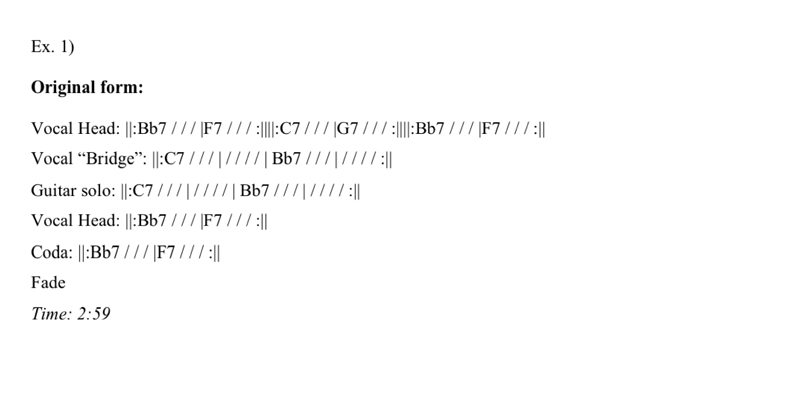
I devised two slightly different solo forms. The changes retained the essence of the original (Ex. 3),
but the harmony has been expanded so that the chords kept moving up or down in minor thirds (Ex. 4).
I also felt that the bridge (Ex. 5a) could function as an interlude, between the two solos as well as between the tenor solo and the band tutti. I decided to use much bigger voicings here (Ex. 5c), with a lot more chromatic movement than I’d used in the “cool” head chorus (Ex. 5b).
As I played with the solo forms, I realized that I wanted to give the background some rhythmic texture. So I devised a scheme for the bridge in which groups of five eighth-notes are superimposed over groups of three (Ex. 6)
One of the biggest challenges was presenting the melody of the song. It sounded great when Hendrix sang it, with his characteristic inflection and delivery. But I didn’t think that it would be as effective as a single instrumental line. First, I worked with the rhythm. Since I didn’t have to deliver the lyric, I had some flexibility (see Ex. 7 a & b).
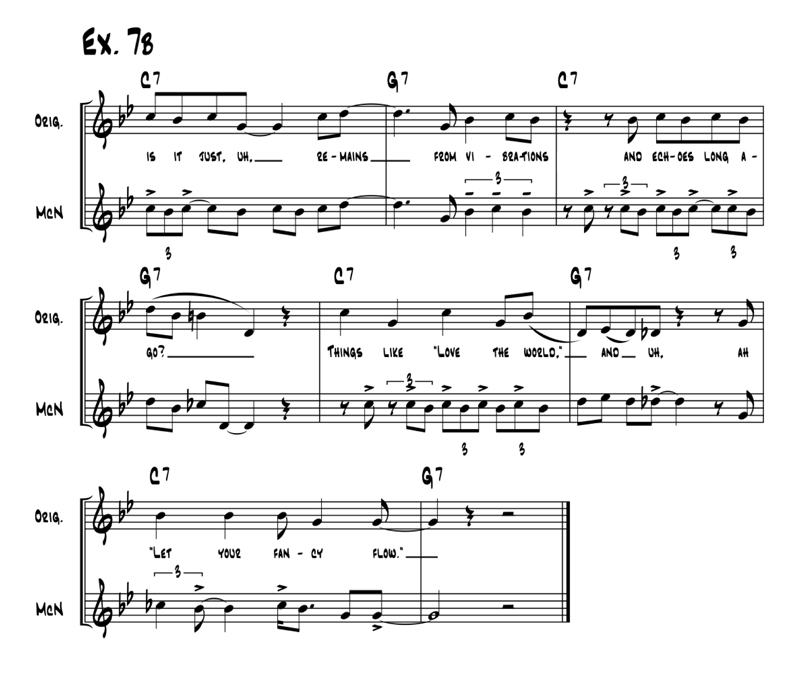
I was also hearing the melody stated with a lush, cloudy voicing, played by all of the winds. Flügelhorns would add to the “round” quality of the sound. I left the bass trombone out of the beginning ensemble, saving him for doubling bass figures. The seven remaining brass are voiced in a tight diatonic cluster (Ex. 8 a & b ).
The soprano sax doubles the lead Flügel, and the other four saxes double voices 2, 4, 5, and 7 (Ex. 9). When this section is played really soft it sounds wonderful! I used a couple of other traditional techniques for more harmonic motion. Parallel planing of a voicing works especially well in embellishing half-step or whole-step melodic neighbor tones. And half-step approaches to a strong target voicing provide good motion in the inner voices
After the solos I wanted the ensemble to say a few things before returning to the “out” head. I went for a “meltdown” effect, first with the saxes, then with even more of the band. I simply wrote a melody (Ex. 10) with the instruction “Don’t play exact rhythms”. The more players in the group, the more effective is the result.
The arrangement’s form finally took shape as shown in Example 2. While I didn’t devise this specific plan on “Day One”, neither did it “just happen”. The form is the result of the myriad of decisions I made throughout the process.
Remember that arranging is about a lot more than voicings and chord changes; it’s about shaping a song in order to tell a good story. You control every single element, including form, color, harmony, rhythm, density and energy. The better and broader your control, the more interesting, nuanced, and powerful the story.
Back to the writing table…
Jim McNeely/Woodshed
Up from the Skies

